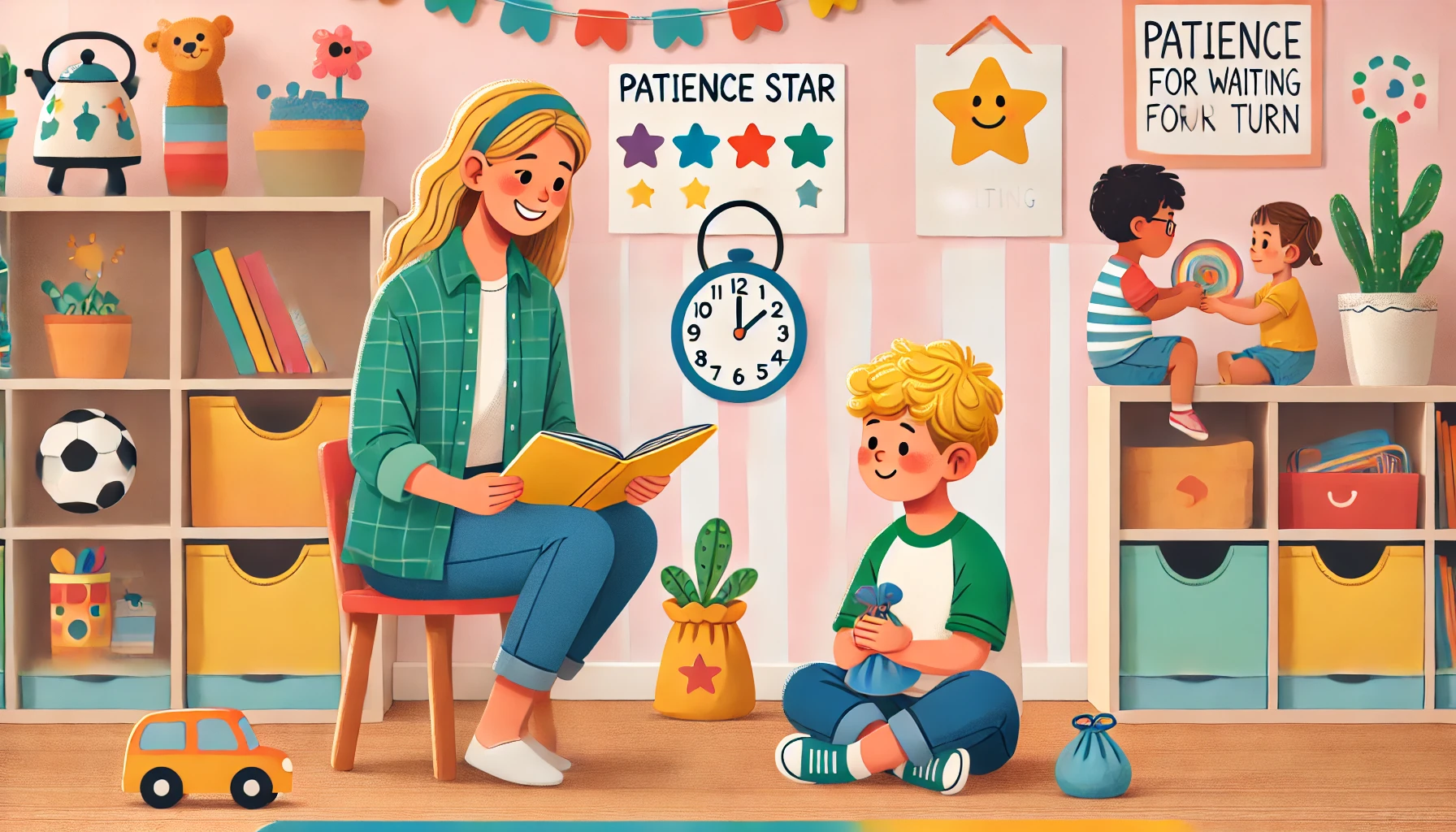How to Teach Young Children About Patience and Waiting Their Turn
Patience is a skill that doesn’t always come naturally—especially to energetic, curious young children! However, teaching kids how to wait their turn helps build emotional regulation, respect for others, and smoother social interactions. With playful strategies and daily practice, children can learn that waiting isn’t just necessary—it can even be fun.
Why Teaching Patience Matters
- Improves emotional control and self-regulation
- Encourages respect for others
- Prepares children for social settings like school
- Reduces frustration and outbursts
- Builds long-term resilience and understanding of delayed gratification
1. Explain Patience in Simple Words
Start with easy, relatable language.
Activity Idea:
- Say: “Patience means waiting calmly for something you want.”
- Give examples: “We wait our turn to use the swing.”
- Ask: “Can you think of a time when you had to wait?”
What Kids Learn:
- What patience means in everyday life.
- That waiting is part of sharing experiences.
- Awareness of self-control.
2. Use Timers for Visual Support
Seeing time pass helps children understand waiting.
Activity Idea:
- Use a sand timer or visual countdown app.
- During transitions, say: “When the timer is done, it’s your turn.”
- Make it interactive: “Would you like to flip the timer?”
What Kids Learn:
- Visual understanding of time passing.
- Comfort with waiting periods.
- Anticipation with structure.
3. Play Turn-Taking Games
Practice makes waiting fun!
Activity Idea:
- Play board games or simple activities like “Simon Says.”
- Use group activities where they must wait, like passing a ball.
- Cheer for others while waiting: “Let’s watch our friends while we wait!”
What Kids Learn:
- Enjoyment in taking turns.
- Social cooperation.
- Patience through play.
4. Create a “Waiting Bag” for Transitions
Keep kids engaged during waits.
Activity Idea:
- Pack small toys, coloring books, or puzzles in a special bag.
- Use it during doctor visits, car rides, or lines.
- Let the child choose what to include.
What Kids Learn:
- Strategies to manage waiting.
- That waiting can include enjoyable activities.
- Independence in self-soothing.
5. Read Books About Patience
Stories make the lesson relatable.
Activity Idea:
- Read books like Waiting Is Not Easy! by Mo Willems or Please, Mr. Panda by Steve Antony.
- Pause to discuss: “Why did the character need to wait?”
- Create your own story about a patient hero.
What Kids Learn:
- Emotional connection to patience.
- Examples of patience rewarded.
- Storytelling for life lessons.
6. Model Patience Daily
Your example is powerful.
Activity Idea:
- Narrate your own waiting: “I’m waiting my turn at the grocery store.”
- Show calm behavior: “I feel a little impatient, so I’ll take a deep breath.”
- Praise yourself and your child: “We waited so patiently!”
What Kids Learn:
- Patience as a normal part of life.
- Coping strategies for waiting.
- Family modeling of self-regulation.
7. Celebrate Small Wins
Reinforce every effort.
Activity Idea:
- Praise specific actions: “You waited so calmly while I finished cooking!”
- Use a “Patience Star” chart to track moments of waiting well.
- Reflect daily: “What did you wait for today?”
What Kids Learn:
- Motivation to continue practicing patience.
- Recognition of progress.
- Pride in their self-control.
8. Teach Calm-Down Techniques
Equip them for tougher moments.
Activity Idea:
- Practice deep breathing or counting to ten.
- Use calming visuals: watch glitter settle in a sensory jar.
- Say: “Let’s take a moment to breathe while we wait.”
What Kids Learn:
- Emotional regulation tools.
- Comfort in waiting situations.
- Mindfulness and focus.
Final Thoughts
Teaching patience to young children helps them build emotional strength that lasts a lifetime. Through stories, games, visual supports, and gentle encouragement, kids learn that waiting is a part of life—and it can be managed with calm and even enjoyment. With daily practice, children develop the resilience to wait their turn and celebrate the moment when it finally arrives.
